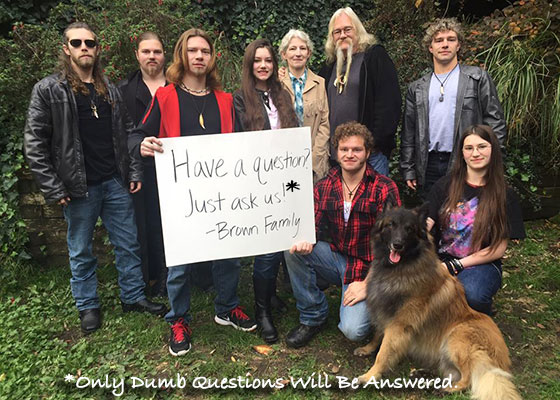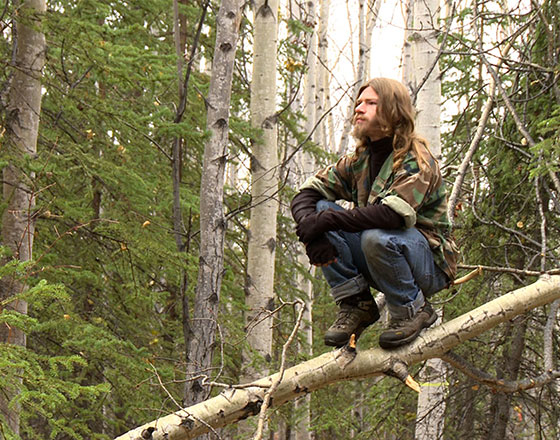I haven’t been this twitchy watching TV in a long time. Props to Discovery Channel as they suck you in to their new docuseries Venom Hunters — premiering Wednesday, Feb. 17 at 10pmET — with just the show’s precautionary warning (“Do not attempt anything you are about to see”). In the new series you’ll learn plenty about snakes, but mostly about the deadly occupation of venom hunting and the eclectic types of people who do it. So who are these venom hunters? How do they collect venom? And what is venom worth? Let’s get you started first by knowing that over 100,000 people are killed by venomous snakes a year. Yikes!
 The series follows an extremely rare and colorful group of hunters who make a living hunting venomous snakes, extracting the venom for various labs around the world, where it is used for medical research from cancer to blindness to making anti-venom to save lives. The demand for venom is at an all-time high, but it’s not easy to collect this highly toxic liquid. Venom Hunters is can’t-turn-away TV, as you nervously watch these crazed hunters as they tromp through murky swamps and go eye-to-eye at ground level looking in holes and rock crevices for their prey.
The series follows an extremely rare and colorful group of hunters who make a living hunting venomous snakes, extracting the venom for various labs around the world, where it is used for medical research from cancer to blindness to making anti-venom to save lives. The demand for venom is at an all-time high, but it’s not easy to collect this highly toxic liquid. Venom Hunters is can’t-turn-away TV, as you nervously watch these crazed hunters as they tromp through murky swamps and go eye-to-eye at ground level looking in holes and rock crevices for their prey.
As with all of Discovery Channel’s successful docuseries (think Gold Rush and Moonshiners), this is all about the personalities behind the profession. Here’s a brief introduction to who the Venom Hunters cast is.
 Tim Fitzer (far right), Kevin Baker and Hannah Lockhart
Tim Fitzer (far right), Kevin Baker and Hannah Lockhart
Hunting Around: Stone Bluff, Oklahoma
The eccentric Tim Fitzer could pretty much have his own show — he’s all about the thrill of the hunt. One look at the guy’s house (he’s a taxidermist) and you know he’s serious about his prey. The self-described “wild man” has been bit five times, and explains how he was tagged in the lip by a timber rattler. He racked up $49,000 in medical bills in just two days the last time he was bit.
“The most dangerous thing I do is get eye-level with these pit vipers in cracks and crevices and holes and that is how I’ve been tagged in my lip by a big timber rattler, and believe me that was one of the most scariest moments of my snake hunting career,” Fitzer shares.
Tim’s turning his snake hunting hobby into a career and has joined forces with his best friend of over 30 years, Kevin Baker (52), and seasoned snake hunter Hannah Lockhart (27), who he describes as being “full of piss and vinegar — she’s fearless.”
If she’s fearless, Tim’s 10 times that, which you will see as he demonstrates how to milk a snake for its venom. “Milking a snake takes a lot of experience and a little bit of crazy,” Fitzer says, as he grabs a Western diamondback in Episode 1.
Brian Barczyk and his protégé Chewy
Hunting In: Red Desert, Australia
Brian Barczyk owns the third largest collection of snakes in the world; he’s got over 30,000! He’s been a TV expert of sorts on reptiles and has his own web series AnimalBytesTV. In Venom Hunters we are introduced to Brian as he looks to take his U.S.-based business internationally, establishing himself as the “go-to guy for exotic venoms.” In the first episode, he takes a weeklong exploratory trip to Red Desert, Australia, looking for king brown snakes, where 40% of untreated bites are fatal. Brian brings along his associate Chewy. Chewy might be the Barney Fife in this pairing, with his wide-eyed, I’m-going-to-shit-my-pants looks and actions when it comes to dealing with the snakes. (No offense here, as I’d be right there with Chewy).
Ed Chapman and Justin Bottrell
Hunting In: Dead Lakes, Florida
The 76-year-old Ed Chapman is a legend in the snake hunting world, as top labs and medical researchers from around the world seek his services. “I’ve caught almost all of the venomous reptiles in this country,” the elderly Chapman brags.
Ed’s protégé is Justin Bottrell (34). These two men have been hunting murky swamps and various terrains together for years. Annoyingly, they prefer not to wear high protective boots, finding it easier to maneuver with short boots, relying on their eyes and ears to tell them where the snakes are. Discovery cameras take advantage of that insanity, giving viewers calf-deep-in-water camera angles that make you cringe.
Chapman’s last bite almost killed him but that was over 40 years ago. He schools that the average person who gets bit usually has about 30 to 60 minutes to get to a hospital. That, however, is not the case for him. If he gets bit he could easily go into anaphylactic shock in two to three minutes. If he doesn’t have an EpiPen available, he’ll die. I’m thinking retirement is looking good.
Dan Massey and Melanie Massey
The final hunting team, although not featured in the premiere, are the husband and wife team of Dan and Melanie Massey from Sahuarita, Arizona, who are inspired by their love of science, research and animal conservation. Per Discovery Channel press materials, Dan is a bilateral amputee, who sees his prosthetic legs as an advantage, so not even injury will slow down the team.
 In addition to the hunters, viewers are introduced to the snakes based on what the hunters need. The hunter rattles off general information about the snakes and the challenges in finding these creatures. Info graphics that give the basic 101 on the snake, as well as the dangers of getting bit and what actually starts to happen if you do get bit, are added. Take, for example, the cottonmouth snake, which Ed Chapman is in need of. This species is part of the pit viper family and is found in the southeastern United States. You’ll learn that the entire inside of this snake’s mouth is white — like cotton — which is how the name originated. Apparently, if you get bit by one of these suckers — and if you don’t get help IMMEDIATELY — the “bodily damage” tally (which the show lists) includes losing some flesh, digits, hand or foot. But that was one of the more non-life-threatening snakes that are hunted in the premiere episode. Catching three of these snakes yields about 250 mg of venom, where it would make about 200,000 doses of anti-venom, potentially saving up to 5,000 lives.
In addition to the hunters, viewers are introduced to the snakes based on what the hunters need. The hunter rattles off general information about the snakes and the challenges in finding these creatures. Info graphics that give the basic 101 on the snake, as well as the dangers of getting bit and what actually starts to happen if you do get bit, are added. Take, for example, the cottonmouth snake, which Ed Chapman is in need of. This species is part of the pit viper family and is found in the southeastern United States. You’ll learn that the entire inside of this snake’s mouth is white — like cotton — which is how the name originated. Apparently, if you get bit by one of these suckers — and if you don’t get help IMMEDIATELY — the “bodily damage” tally (which the show lists) includes losing some flesh, digits, hand or foot. But that was one of the more non-life-threatening snakes that are hunted in the premiere episode. Catching three of these snakes yields about 250 mg of venom, where it would make about 200,000 doses of anti-venom, potentially saving up to 5,000 lives.
Tune in for the real hunts — Venom Hunters airs on Discovery Channel Wednesdays at 10pmET.





You guys need to show the milking of the snakes along with the capture, also feature more humane captures like the amputee and his wife who milk the black rattler on site then release. Or at least show more of what the venom is used in and how it’s collected, it’s just as interesting if not more than the capture, which seem to be “dramatized” a bit, but either way maybe 75 catching, the other 25 about milking those snakes and storing and sending the venom, how and what it’s going to, and how much antivenom it makes.
Hey Mr fitzer anytime you need copperhead gimme a call I know where hundreds are all in one place year after year , call Bobby 443-303-9078
How much do these venom hunters make?
You want copper heads? Come visit my part of county